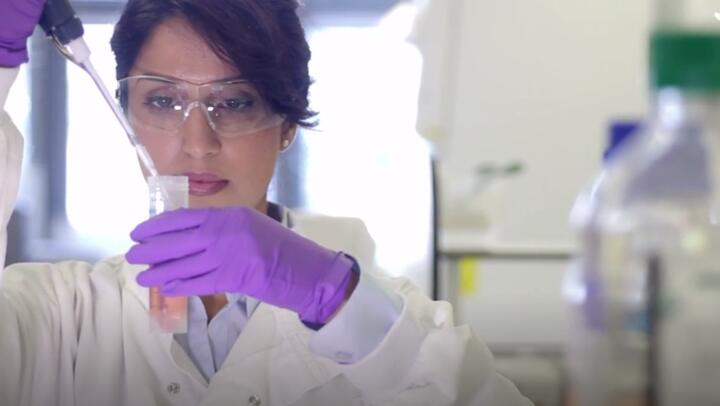
Soft tissue sarcomas are rare and there are no standard screening tests for them. So, most people learn they have a soft tissue sarcoma after visiting the doctor for a persistent problem. Since there are over 50 types of soft tissue sarcomas, the symptoms vary. However, more than half of these cancers start in a limb. For these cancers, a lump or bump that grows over weeks or months is a typical reason for seeing the doctor. When soft tissue sarcomas start in the abdomen, it may be belly pain that keeps getting worse or a mass you can feel.
If you, or a loved one, are facing a potential soft tissue sarcoma diagnosis, you may be unsure of what comes next. Here is a look at the diagnostic process and what it can tell you about a soft tissue sarcoma prognosis.
Diagnostic Testing
The diagnostic testing phase mainly consists of imaging exams. You may have already been through this part of the process. Imaging exams show your doctor whether the suspicious area could be cancer. They can also be used later in the process to see if the cancer has spread and if so, where and how far.
The exams you need can vary depending on the location of the potential cancer. Exams may include X-ray, ultrasound, CT (computed tomography), MRI (magnetic resonance imaging), and PET (positron emission tomography) scan.
Biopsy
If suspicion remains after imaging exams, the next step is a biopsy. You may have already been through this, as well. A biopsy takes a tissue sample from the area so a pathologist can examine the cells under a microscope. It is the only way to know for sure whether a tumor—an abnormal growth of cells—is cancerous or not.
Because soft tissue sarcomas are so rare, the ideal situation is to have a biopsy at a cancer center experienced in diagnosing these cancers. It’s important to select the right kind of biopsy and use the proper technique. An improper biopsy can lead to problems grading and staging the cancer and in the treatment stage. A specialized cancer center will have surgeons and pathologists with the necessary expertise to get it right. Choose a cancer center that sees at least 50 soft tissue sarcoma patients per year. You can find a center at the Sarcoma Foundation of America.
Grading the Cancer
Glass slides with your biopsy sample are examined under the microscope. Your pathology testing results will tell your doctor about the cancer’s grade. Basically, grading describes how aggressive a cancer is and how quickly it is likely to grow and spread. The cancer’s grade can affect your prognosis. In general, low-grade cancers have a better outlook. High-grade cancers are usually more aggressive and difficult to treat.
For soft tissue sarcomas, doctors use three factors to determine the grade:
- Differentiation: This is how normal or abnormal the cells look on a scale of 1 to 3. Cancer cells that look close to normal get a score of 1. Cancer cells that look very abnormal get a score of 3.
- Mitotic count: This is how many cancer cells are dividing (going through mitosis) on a scale of 1 to 3. A score of 1 means few cells are dividing.
- Tumor necrosis: This is a measure of how many cells are dying on a scale of zero to 2. In many different kinds of cancer, necrosis is associated with a poorer prognosis. A score of zero means few cells are dying, which is linked to a better prognosis.
The total of the three scores determines the grade of the soft tissue sarcoma. There are four soft tissue sarcoma grades:
- GX: The cancer doesn’t have a grade due to incomplete information.
- G1: The cancer has a total score of 2 or 3.
- G2: The cancer has a total score of 4 or 5.
- G3: The cancer has a total score of 6 to 8.
Certain types of soft tissue sarcomas, such as synovial sarcoma, are automatically high-grade.
Staging the Cancer
Staging describes how extensive the cancer is. Staging relies on information from imaging exams and from your pathology report. There are different staging systems for the different types of soft tissue sarcoma. So, your doctor is the best source for an explanation of your particular soft tissue sarcoma staging.
There are four general soft tissue sarcoma stages based on tumor size and grading groupings:
- Stage I: The tumor is small and GX or G1.
- Stage II: The tumor is small and G2 or G3.
- Stage III: The tumor is large and G2 or G3.
- Stage IV: The tumor can be any size and any grade, but has metastasized—or spread—to other parts of the body.
In general, stage I soft tissue sarcomas are low-grade, stages II and III are high-grade, and stage IV is metastatic.
Choosing Treatment
Once your doctor understands the stage and grade of your soft tissue sarcoma, you can start to plan your treatment course. Surgery will be the main soft tissue sarcoma treatment in the majority of cases. For some low-grade tumors, it may be the only treatment necessary. High-grade tumors and metastatic cancer will require additional treatment. This usually includes radiation therapy, but could also involve chemotherapy and targeted therapy.
Due to the rarity of these tumors, it is best to work with a cancer center specializing in soft tissue sarcomas. From the initial biopsy to treatment planning, these centers are best able to guide you through the process and give the care that is right for you.



















